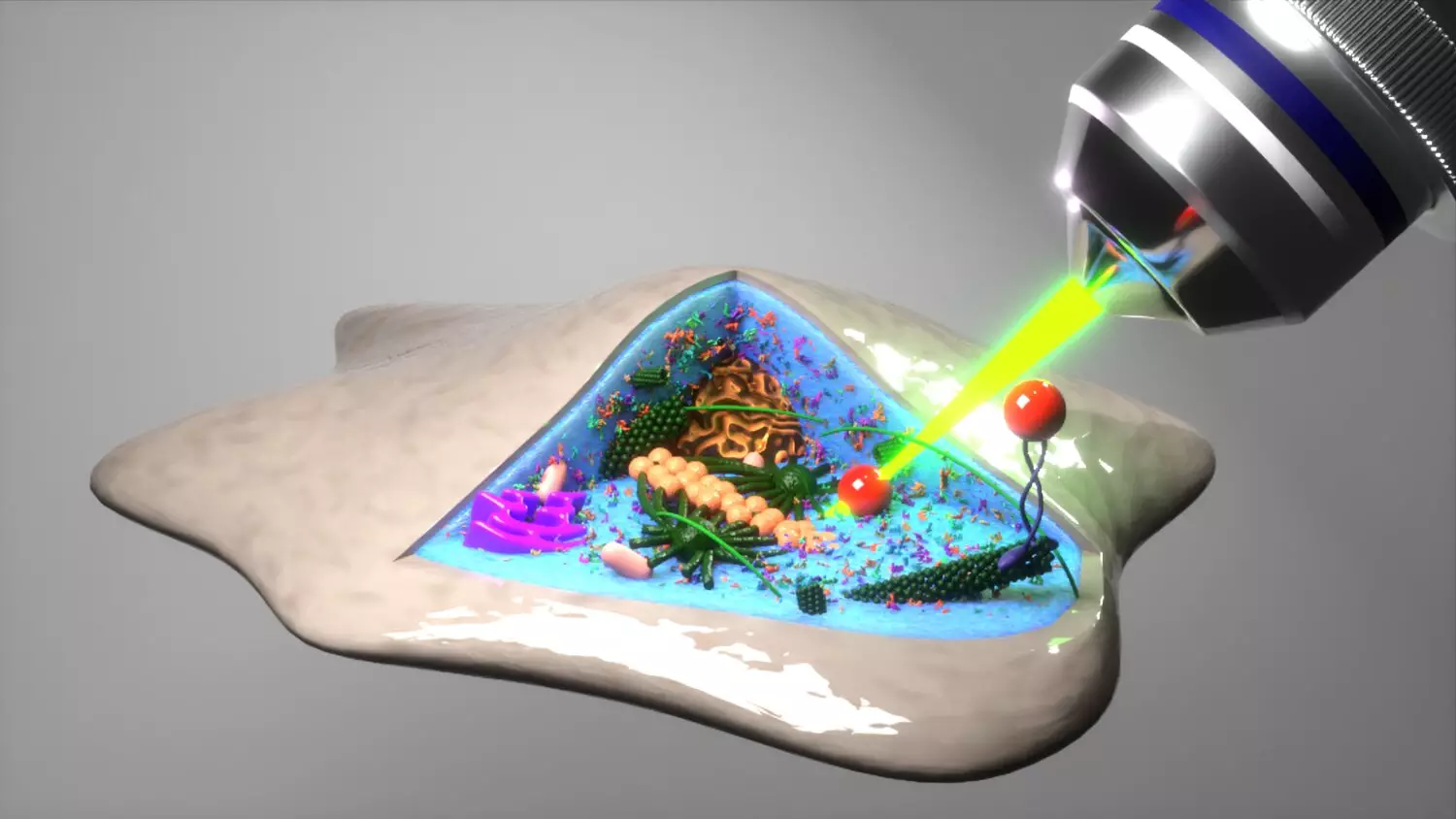Understanding the mechanisms of life hinges on the microscopic world of cells—the fundamental building blocks that dictate the functioning of all living organisms. Traditionally, examining their properties often required invasive techniques that could damage these delicate structures, thereby limiting our understanding. The challenge of establishing a clear picture of cellular mechanics has stymied scientists for over a century, underscoring a profound gap in our biological knowledge. Yet, recent advancements from researchers at the University of Göttingen offer a promising new method that could revolutionize our understanding of cellular mechanics without compromising cellular integrity.
Revolutionary Techniques for Cellular Analysis
At the forefront of this breakthrough is a novel approach grounded in the natural erratic movements of microscopic particles. By simulating the expected fluctuations, researchers were able to explore these movements through optical laser traps. This cutting-edge technique not only measured movements down to the nanometer scale but also boasted an astonishing temporal resolution of about 50 microseconds. This level of precision allows scientists to capture the dynamic behaviors of particles within the cellular context, heralding a new era of cellular analysis.
However, what sets this research apart is the consideration of the “history” of these movements. This awareness captures the tendency of microscopic objects to return to previous positions after wandering, leading to the introduction of a revolutionary metric dubbed “mean back relaxation” (MBR). By creating a kind of biomarker from these movements, scientists can discern not just passive movements governed by temperature, such as Brownian motion, but also active biomechanical processes within living cells. This distinction is critical for elucidating the complexities of cellular environments.
Bridging the Knowledge Gap in Cell Biology
The implications of this new metric are staggering. As the researchers applied the MBR technique to living cells for the first time, they discovered that the interior environment of these cells could be characterized with unexpected clarity. The juxtaposition of the known mechanical properties of simpler materials against the complexities of live cellular structures represented a noteworthy challenge—but from the results came an exhilarating revelation that encouraged further exploration.
Professor Matthias Krüger from the Institute of Theoretical Physics articulated this excitement, noting that MBR could unearth data that conventional methodologies could overlook. Meanwhile, Professor Timo Betz expressed his amazement at the clarity with which the cellular interiors could be defined utilizing their initial models designed for far less complex structures. This newfound capability not only amplifies our understanding but also solidifies the critical role of innovative analytical methods in biological research.
The Future Implications for Medicine and Biology
The significance of these developments extends far beyond academic curiosity. A deeper understanding of cellular mechanics could lead to remarkable advancements in medical diagnostics and therapeutic interventions. If we can determine whether the cellular environment is soft, hard, or fluid, researchers can better comprehend how various diseases manipulate these conditions. For example, how cancer cells disrupt normal cellular mechanics or how the stiffness of heart tissue influences its function could open doors to targeted treatment strategies.
In a field often burdened by the limitations of existing technologies, this new methodology represents not merely an incremental advancement, but a substantial paradigm shift. By harnessing the natural phenomena of cellular behavior, scientists may dramatically change the trajectory of research, allowing for more nuanced and comprehensive insights into the cellular dynamics that fundamentally govern life.
The research team’s innovative approach is a vivid reminder of the interconnected nature of exploration in science—it involves both acute observation and the reimagining of traditional models. It is through such brave endeavors that we might finally bridge the gap in our understanding of the microscopic foundations of life, potentially unlocking the secrets held within our very cells.

